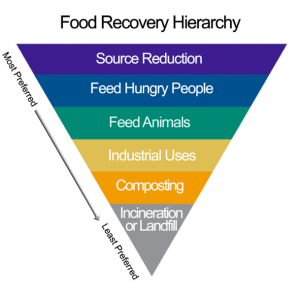Environmentalist, entrepreneur, and journalist Paul Hawken just authored a book, Drawdown, which looks at the top 100 solutions to climate change. We were excited to see that one of Pisces Foundation’s priorities was first on that list. (Take the New York Times Quiz to see what solution that is.) Another of our priorities ranked Number 3: reducing food waste.
In the U.S. alone, over 50 million tons of wasted food is sent to landfill each year. This results in enormous amounts of the climate super pollutant methane being released as the waste decomposes. The good news is that individuals, businesses, nonprofits, and governments are already beginning to find solutions. So much is happening, in fact, that one of our partners, the Johns Hopkins Center for a Livable Future, just published a new report that inventories and analyzes the growing number of governmental plans to tackle food waste. Here’s what they found:
- Increased Attention: The number of new plans each year has dramatically increased since 2000. Their report analyzes 93 of those plans.
- Cross-cutting Issue: Objectives for addressing wasted food are included in multiple types of governmental plans, most commonly in solid waste management plans and least commonly in climate plans.
- Specific Targets: Twenty-two of the plans set numeric targets for minimizing the amount of food that is wasted by a specific year.
 The report also notes areas where government plans can improve. For example, the Environmental Protection Agency (EPA) food recovery hierarchy emphasizes that the top goal should be prevention, e.g., reducing the quantity of excess food produced, purchased, or served. Researchers found that while governmental plans often stated a commitment to prevention, their activities did not directly connect to it.
The report also notes areas where government plans can improve. For example, the Environmental Protection Agency (EPA) food recovery hierarchy emphasizes that the top goal should be prevention, e.g., reducing the quantity of excess food produced, purchased, or served. Researchers found that while governmental plans often stated a commitment to prevention, their activities did not directly connect to it.
The report makes clear there is no “silver bullet” solution in addressing this complex problem. Rather, jurisdictions have multiple options to consider in developing their plans that address food loss and waste in their local context, and that can contribute to the national goal of halving food loss and waste by 2030. See the complete report to learn more.



